If you're reading this blog, you've probably seen it all – keto, atkins, paleo, carnivore, low-fat, the list goes on.
What pretty much all popular diets have in common is their emphasis on maintaining healthy blood glucose. It's now accepted common sense that we should try to keep glucose in a reasonable range, without excessively high peaks or low troughs.
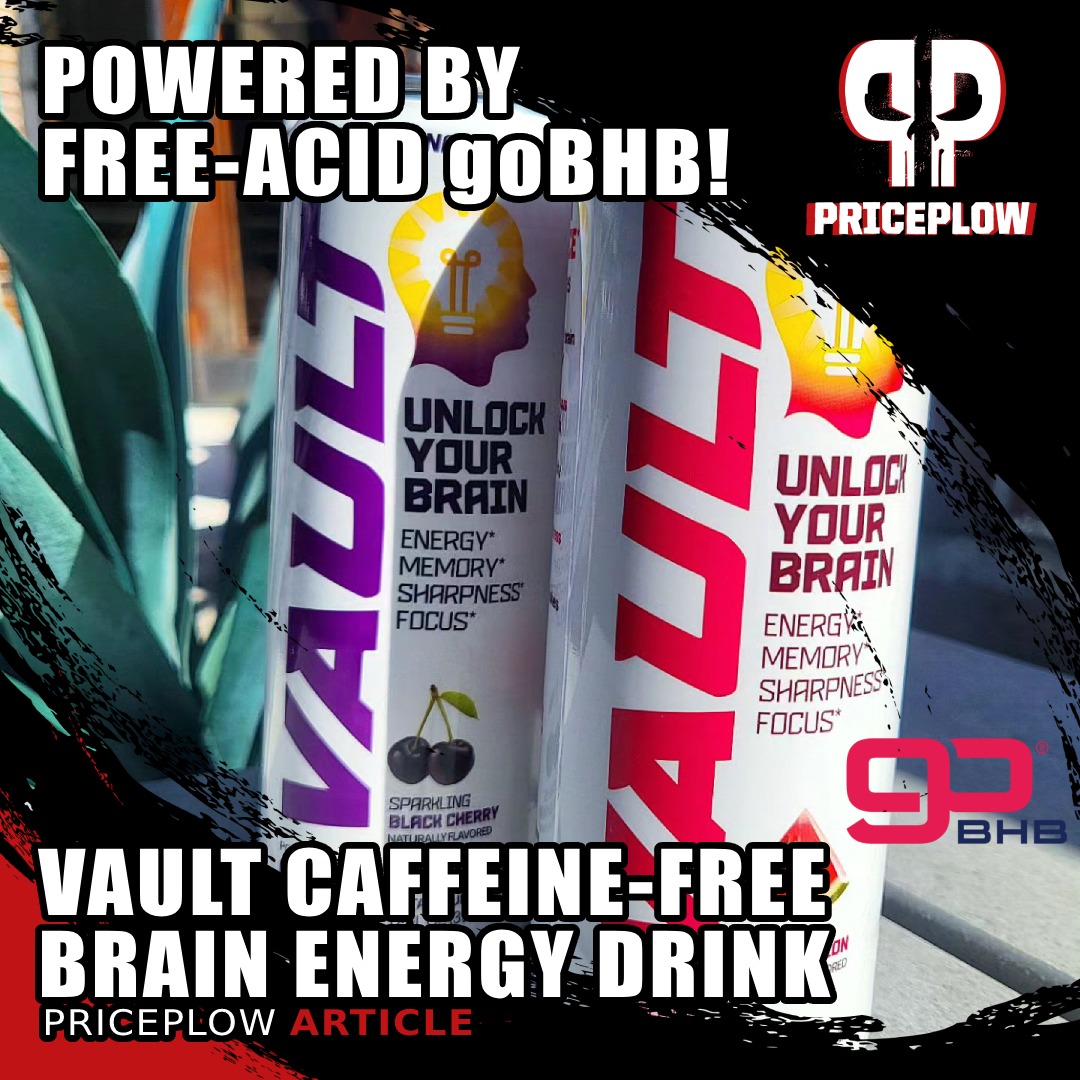
Vault Caffeine-Free Brain Energy Drink is powered by a whopping dose of two forms of BHB - Free-Acid D-BHB and Potassium D-BHB... a combination that feels downright phenomenal
And of all the systems in the body, there's none more sensitive to fluctuations in blood glucose than your brain!
In fact, the ketogenic diet's arguably greatest benefit is that it can supply a steady, uninterrupted, and clean-burning source of energy to your neurons. And that's exactly what the VAULT Caffeine-Free Brain Energy Drink is formulated to do.
The flagship ingredient here is beta-hydroxybutyrate (BHB), an exogenous ketone. But it's not just any BHB -- the first ingredient is actually free-acid BHB, providing near instant energy without a huge mineral load.
Contrary to popular belief, you don't need to follow a ketogenic diet in order to reap the benefits associated with BHB metabolism. Taking exogenous BHB can yield many of the same benefits. You can think of VAULT as ketones in a can – and your brain will thank you.
And while this is caffeine-free, we conclude with how BHB may synergize with your caffeine use as well -- you just won't get any of it in this can.
Let's get into how VAULT works, but first, check the PricePlow news and deals:
Vault Caffeine-Free Brain Energy Drink – Deals and Price Drop Alerts
Get Price Alerts
No spam, no scams.
Disclosure: PricePlow relies on pricing from stores with which we have a business relationship. We work hard to keep pricing current, but you may find a better offer.
Posts are sponsored in part by the retailers and/or brands listed on this page.
This area is reserved for Team PricePlow's upcoming videos.
Subscribe to our channel and sign up for notifications so you catch it when it goes live!
Vault Caffeine-Free Energy Drink Ingredients
In a single 12 ounce (1 can) serving of VAULT Caffeine-Free Brain Drink, you get the following:
-
D-Beta-Hydroxybutyric Acid, D-Beta-Hydroxybutyrate Potassium, Acetyl-L-Carnitine HCl – 12.7 grams
This is a blend of three ingredients, and below we do the math showing that we're getting at least 10 grams of BHB inside:
- D-Beta Hydroxybutyrate (BHB) is an exogenous ketone. As you probably know from reading about the ketogenic diet, ketones are molecules your cells can use for fuel, as an alternative to glucose. They are actually the fourth macronutrient (after protein, fat, and carbohydrates).
Although BHB is usually produced endogenously by your body's cells, science has made it possible for us to take exogenous (externally supplied) BHB supplements. That part of the story is best explained on the PricePlow Podcast in Episode #131 with Rob Rogers of Ketone Labs, where we learned how BHB supplements came to be, and how their production has improved greatly over time.
As it turns out, exogenous BHB supplementation offers numerous benefits for human health and performance.
Note the forms of BHB used - free acid and then potassium-bound
Up front, it's important to note that VAULT uses D-BHB, which is the isomer shown to increase blood BHB levels more than L-BHB or MCT.[1]
Before getting into the science, realize that we have two forms of BHB inside -- the first is free acid BHB, which works in liquid and doesn't have any minerals bound to it. After that, we have Potassium D-BHB, which supplies us with a phenomenal 760 milligrams of potassium, a mineral that humans (especially in the west) often have in shortfall.
Doing some basic chemistry / molar math, we calculate that we have 2.8 grams of potassium D-BHB, which means we have at least 7.1 grams of free acid BHB... meaning at least ~10 grams of total BHB in Vault!
We cover the potassium benefits below, but let's get to the important part -- the BHB:
-
Promotes Healthy Cognition, Decreases Anxiety
The benefits of BHB are especially pronounced in the brain, which is exquisitely sensitive to fluctuations in blood glucose. The bottom line up front is that providing your brain with a steady, clean source of energy in the form of exogenous BHB can help optimize your cognitive performance, as well as stabilize your emotional state.
For example, animal research has demonstrated that BHB supplementation can help decrease anxious behavior.[2,3]
Impact on brain health
One pre-clinical experiment showed that exogenous BHB can actually prevent the development of neurodegenerative diseases in mice. The study looked at 3xTgAD mice, a strain of mice that are genetically predisposed to developing amyloid and tau proteins, which are associated with severe neurodegenerative disorders due to their aggregation into plaques that disrupt neural function.[2]
One group of mice ate a carbohydrate-rich diet, while the other group fed on ketones that increase serum BHB levels. Compared to the carbohydrate group, the ketone group did significantly better on a battery of cognitive tests throughout the study period.[2]
According to the scientists behind this study, the mechanism likely has something to do with BHB's ability to improve mitochondrial health and function, while decreasing neurological inflammation.
Can improve Traumatic Brain Injury (TBI) and concussion outcomes
Life is chaotic, and sometimes accidents happen. When it comes to hitting your head, concussion or even traumatic brain injuries (TBI) can be a concern, and not just for athletes.
Whether you hit your head playing football or just doing work around the house, physical trauma to the brain causes a neurometabolic cascade that can have devastating effects on neuronal health and function.[5]
Central to this is the neuron's loss of ability to burn glucose for energy, which is a huge potential problem since neurons need uninterrupted energy availability to survive and thrive. Once they can't burn sugar, they are at serious risk of death[5] – and this is a major factor in the onset of brain damage typically seen following a blow to the head.
D-BHB vs. MCT vs. L-BHB. In the late 2010s, it became clear that D/R-BHB was far superior to L-BHB or mixed racemic D/L-BHB.[1]
Exogenous BHB comes into play as a potential alternative fuel. If we can give our neurons ketones to burn instead of glucose, then we can help prevent them from dying, and hence, mitigate any potential damage to the brain as a whole.[6]
Although human research hasn't yet been done on this specific use case,[7] the animal studies conducted thus far have been very promising.[6] They show across the board that exogenous BHB administration can substantially limit the damage to neural tissue following a TBI.[8]
Consider preventative use for contact sports
Rob Rogers of Ketone Labs joins PricePlow for Episode #131 to explain the story behind goBHB, and how they're BACK on the market for supplement formulators!
This was also discussed in Episode #131 with Rob Rogers, who suggests that VAULT can actually be an incredible tool to drink before football games as a preventative measure -- and as we'll discuss, the electrolytes and performance boost on top of the cognition support aren't bad to have either.
Mood disorders and anxiety
New theories of depression are coming to the fore, with recent studies suggesting that neurological inflammation plays an important role in the onset of depressive syndromes. Fortunately for us, BHB has been shown to downregulate the inflammatory factors – including interleukin-1β (IL-1β) and tumor necrosis factor-α (TNF-α) – that seem to be responsible for the pathophysiology of depression. As a result, BHB administration can measurably decrease the behaviors associated with depression.[9]
One study found that rodents who'd been micro-injected with BHB did significantly "better" on tests of mental and physical resilience, like the forced swim test (FST) and open field test (OFT).[10]
-
Decreases Hunger
The metabolic improvements associated with exogenous BHB come with other important benefits, too. For example, one 2017 study showed that ingesting exogenous BHB can cause substantial drops in appetite, insulin, and ghrelin,[11] which can be thought of as the hormone that makes you hungry. Put simply, the more ghrelin you have circulating, the more you'll want to eat.[12]
Interestingly, this study supports an assertion commonly made by keto dieters – that the diet helps them eat a lot less than usual.
Fat loss
Despite the enormous volume of research on how ketogenic dieting can affect weight loss, the findings in humans remains inconclusive. However, animal studies have provided us with some really persuasive evidence that exogenous BHB can help shed the extra pounds – and keep them off.[13]
In one of these studies, overweight mice that ate a high-fat diet for 10 weeks had a higher basal metabolic rate (number of calories burned at rest), and lost significant amounts of fat when given BHB supplements for an additional 12 weeks.[13]
The really interesting thing about this study design is that because of the 10-week-long period of high-fat eating, the animals were almost certainly already fat adapted. So this study suggests that exogenous BHB have special benefits that go above and beyond what the body is capable of producing endogenously.
-
Supports Cardiovascular Health
According to a 2017 study in humans, BHB ingestion can significantly lower blood sugar, free fatty acid, and triglyceride levels.[4] All three of these are markers for cardiovascular health, which means that exogenous BHB can potentially help keep your heart and arteries functioning well.
In another study, 6 weeks of supplementation with exogenous BHB actually decreased blood pressure in subjects between the ages of 18 and 35.[14]
Visceral fat
In one 2017 study, supplemental BHB improved blood lipids and helped burn visceral fat in rats.[15] This is a particularly important finding, because visceral fat mass is strongly associated with insulin resistance and the metabolic syndrome, which can have terrible consequences for cardiovascular health.
This study found higher HDL cholesterol, lower LDL cholesterol, and lower triglycerides.[15] That's a big deal because this specific three-part combination is increasingly considered to be the gold standard for improving cardiovascular health. There's a ton of peer-reviewed research showing that the HDL to triglyceride ratio, in particular, is strongly associated with insulin resistance.[16-21]
-
Metabolic Flexibility On Demand
One thing we really love about exogenous BHB is that it's supportive no matter who you are. What wasn't understood enough in the 2010s is that you don't actually need to be in a state of nutritional ketosis for BHB to work![22]
In other words, BHB can help no matter what your current dietary carbohydrate intake happens to be. Exogenous ketones can help even if your goal is to use glucose for certain metabolic tasks (e.g. combining with carbs for high-performance athletics).
This has been borne out by studies going all the way back to the early 1990s, which found that exogenous BHB can spare glucose by acting as a substitute fuel source. So if you're, say, an endurance athlete who's carbo-loading for an event, supplementing with BHB can help preserve your precious glucose supply for the high-intensity efforts where it's absolutely required, leading to increased metabolic flexibility, decreased lactic acid production, and improved performance during exercise.[23]
However, we're more interested in the co-administration of carbs and BHB for focused bouts of strength and sprinting, too. This is something we hope to see in research over the next few years -- we call it "double rocket fuel".
Great for ketogenic dieting or intermittent fasting
But still, if you're attempting an intermittent fasting (IF) or ketogenic diet regime, but struggling due to drops in energy, then goBHB is the perfect solution – you can supply your body, and most importantly, your brain, with easily-usable, clean-burning energy that won't severely disrupt your fast.
Anecdotally, many claim that BHB helps support the transition to ketosis. Although this is anecdotal, research has shown that MCTs can reduce symptoms of keto-induction (sometimes known as the "keto flu",[24] and MCTs are metabolized directly into BHB, so the anecdotes make sense beyond the electrolyte support that BHB salts can also provide.
-
BHB in Human Athletes
goBHB is not just a "keto" supplement -- one of the best benefits is in fact productivity from improved mental clarity and stimulant-free energy!
Although there isn't a ton of research on the subject yet, the few studies that have been done on BHB in human athletes have shown that it's useful in certain cases. Ketones on their own haven't done much for anaerobic efforts like sprints or heavy lifting,[25,26] but they do have a significant glucose sparing effect during aerobic exercise.[27]
Lactic acid (AKA lactate), which causes muscular fatigue, is a byproduct of glucose oxidation, so by encouraging your body to burn fat instead of glucose at lower intensities, exogenous BHB can reduce the formation of lactate and thus delay the onset of fatigue.[28]
Interestingly, in keeping with the cognitive health benefits we discussed earlier, supplemental BHB can also help prevent the temporary decline in cognitive faculties that typically follows intense exercise.[26]
Muscle protein synthesis
Research going all the way back to 1988[29] shows that BHB can actually help us build muscle. The ketone does this from both ends – it not only increases muscle protein synthesis (MPS), but also inhibits the breakdown of existing muscle and the oxidation of MPS-stimulating amino acids like leucine.[30,31]
You may have heard that BHB is "protein-sparing" -- this is what people mean when that phrase is mentioned. This makes BHB an awesome ally for anyone who's looking to improve body composition.
That's not the end of the blend, though. We also have a conditionally-essential compound that has another whole slew of benefits:
-
-
Acetyl-L-Carnitine HCl benefits
But besides BHB, we also have acetyl-L-carnitine HCl (ALCAR) in this blend – an ingredient that comes with serious benefits of its own.
What better ingredient to add to a BHB drink than the molecule that helps shuttle long-chain fatty acids inside the mitochondria, enabling greater ATP generation?![32]
We love seeing ALCAR in a brain-health-focused drink because ALCAR has a long history of use in the supplement industry as a nootropic ingredient. It has pronounced neuroprotective, neurotrophic (i.e., it helps new neurons grow) and strong mood-supporting effects.[33-35]
Any form of carnitine works, fundamentally, by helping transport energy substrates into your mitochondria, which ultimately supports the production of adenosine triphosphate (ATP).[36] This process benefits the metabolic function of pretty much any type of cell, but because ALCAR is exceptionally bioavailable in the central nervous system thanks to its ability to cross the brain blood barrier,[37] ALCAR is great for supporting neuronal metabolic function specifically.
Research in animals has shown that supplementation with ALCAR can increase the synaptic plasticity of their brains, thus facilitating learning.[38]
And one particularly interesting human study, carried out in men and women over the age of 65 who were suffering from mild cognitive impairment, found that ALCAR significantly improved scores on a series of cognitive tests, compared to placebo.[39]
We're not sure how much ALCAR is inside of VAULT, but we'll update this area if we can find that out.
- D-Beta Hydroxybutyrate (BHB) is an exogenous ketone. As you probably know from reading about the ketogenic diet, ketones are molecules your cells can use for fuel, as an alternative to glucose. They are actually the fourth macronutrient (after protein, fat, and carbohydrates).
-
Other Ingredients
VAULT also offers significant vitamin and mineral support, which takes the form of:
-
Vitamin D (as Cholecalciferol) – 100 mcg (500% DV)
Cholecalciferol (vitamin D3) is your body's active form of vitamin D, the form it produces endogenously in response to sunlight. Because it's the active form, cholecalciferol is more effective at raising your vitamin D blood level than the cheaper but less effective vitamin D2 (known as ergocalciferol).[40,41]
Beyond caffeine-free energy drinks, there are tons of applications to consider with BHB, and formulators can now license goBHB to make their own
Vitamin D affects tons of stuff, but one of its biggest benefits is hormone optimization. For men, this means upregulated testosterone production[42,43] by inhibition of the enzyme aromatase,[44] which is responsible for converting testosterone into estrogen. Studies on vitamin D consistently find that one's serum vitamin D level has a positive correlation with testosterone levels.[42]
A double-blind, randomized, placebo controlled study from 2011 showed that 3,332 IU of vitamin D3 (equivalent to 83 micrograms, just under the 100 microgram dose used in VAULT) can cause a 25% increase in total T, and a 20% increase in free T.[43]
Vitamin D deficiency is associated not only with low testosterone but also with overweight/obesity, depression, high blood pressure, osteoporosis, cognitive decline, chronic fatigue syndrome, cancer, heart disease, and stroke.[45,46]
Adequate vitamin D levels also help protect against cardiovascular disease (CVD) by downregulating inflammation, helping stabilize blood sugar, and preventing vascular calcification.[45]
-
Niacin (as Niacinamide) – 250 mg (1563% DV)
Niacin (vitamin B3) is an important precursor to nicotinamide adenine dinucleotide (NAD+),[47-49] a molecule that your body needs to carry out a dizzying array of metabolic processes. For example, NAD+ is needed for liver function and DNA repair.[50-53]
The NAD Pathways, listed in blue.[47] For this product, Nicotinamide (NAM) is what we're supplementing, shown at the bottom-right.
Supplementing with niacin can increase your body's production of adiponectin,[54] a hormone that has tons of downstream effects on cellular metabolism. Among other things, adiponectin increases whole-body insulin sensitivity – studies consistently show that overweight and obese individuals have low levels of adiponectin, on average.[55] Adiponectin works mainly by increasing the expression of AMP-activated protein kinase (AMPK),[56] an enzyme that acts as one of your body's metabolic master switches. We like to think of AMPK as the need energy now hormone – the more of it you have, the faster your cells will generate new energy.
Niacin can downregulate your fat cells' production of inflammatory cytokines,[54] which has a huge potential upside for health since cytokine-induced inflammation is associated with metabolic dysfunction.[57]
-
Sodium – 210 mg (9% DV) (Black Cherry Flavor only)
You might be surprised to see sodium in a product like VAULT, since it's normally used to replenish electrolytes lost in sweat, which is generally a concern for athletes. So what's it doing in a product like VAULT, which is designed to help optimize cognitive performance?
As it turns out, sodium intake can have a powerful effect on the endocrine system – and more specifically, stress hormones. Research shows that elevated serum sodium can blunt the stress response and decrease anxious behavior.[58]
The reason this matters for cognition is that the stress response itself can interfere with cognitive performance.[59] So, blunting that stress response through extra sodium intake can help keep your brain functioning under pressure.
Note: Sodium is only in the Black Cherry flavor, as of 2024.
-
Potassium – 760 mg (16% DV)
The potassium source comes from the D-BHB Potassium ingredient, listed second on the label. It's extremely useful, especially in the wake of our low-potassium, high-sodium diets. A mountain of research clearly shows that the interaction between these two minerals, rather than absolute sodium intake, is what leads to the onset of hypertension[60] – too much sodium relative to potassium is what's actually bad for the cardiovascular system.[61-65]
This should be great news for everybody, because the latest research shows that it's essentially impossible to meet the current guidelines for limiting sodium intake. The implication, then, is that increasing potassium intake is really our only option.[66,67]
-
While this is a cool formula, the D-BHB Acid and D-BHB Potassium are clearly the stars of the show - VAULT is a feel-great, taste-great drink, and is a fantastic way to get energy without caffeine.
But on the topic of caffeine...
Brain Energy and Focus For the Caffeine-Sensitive
Our culture seemingly runs on caffeine, and coffee pots are a fixture in offices all over the world. No matter what field you're in, it seems like everybody's instinct is to reach for another mug as soon as the going gets tough.
However, if you've been around long enough, you also know that caffeine is not for everybody. If you're a slow metabolizer of caffeine, or just unusually sensitive to its effects, exogenous BHB is a great alternative, especially when looking for those nootropic effects.
The best part is that once you're done with your work, the BHB you took aren't going to keep you up that night.
But... BHB may synergize with caffeine too
While there's not a ton of research on this subject yet, we've noticed anecdotally that combining BHB with caffeine can result in some desirable synergistic interactions.
While both of these compounds have documented nootropic effects, they each have very different mechanisms of action, which means they can complement each other – what we typically see is that when caffeine is consumed alongside BHB, you can the upsides of caffeine, like increased energy, motivation, focus, and athletic performance, with a far less debilitating crash.
Since BHB is the preferred substrate for GABA,[68] and has been shown to increase the ratio of GABA to glutamate in animals,[69] you can think of it as a GABAergic or inhibitory compound. This means that it can, like fellow GABAergic substance theanine, "take the edge off" caffeine by mitigating its worst effects – i.e., reducing jitters and anxiety.
Plus, both caffeine and BHB have a positive impact on cellular energy production: While caffeine can increase the utilization of both glucose and fatty acids, BHB has been shown to help your body burn fat specifically.[70] Together, these two compounds have the potential to really crank up cellular metabolism, and help power your body with clean, sustained energy.
Conclusion - Vault for Stimulant-Free Energy
VAULT is a "simple" formula (in terms of number of ingredients), but quite powerful – the benefits of exogenous BHB are simply too great to ignore, and the dietary supplement industry needs to come back to the ingredient.
We love how BHB-loaded this formula is. It's no underdosed supplement, that's for sure. With 760 milligrams of potassium, this means we have 2.8 grams of potassium D-BHB (potassium portion ≈ 27.29% of the molecule). That means we have a maximum of 2.8 grams of ALCAR -- likely less -- and a minimum of another 7.1 grams of free acid BHB... so you're looking at at least 10 grams of BHB, but more than likely higher than that.
No wonder why this stuff feels so good!
Our advice is that, given the fairly large dose of vitamin D3 in here, you should consider adding supplemental vitamin K2 (a recommended counterpart for cholecalciferol), especially if you're planning to drink it on a regular basis.
Vault Caffeine-Free Brain Energy Drink – Deals and Price Drop Alerts
Get Price Alerts
No spam, no scams.
Disclosure: PricePlow relies on pricing from stores with which we have a business relationship. We work hard to keep pricing current, but you may find a better offer.
Posts are sponsored in part by the retailers and/or brands listed on this page.
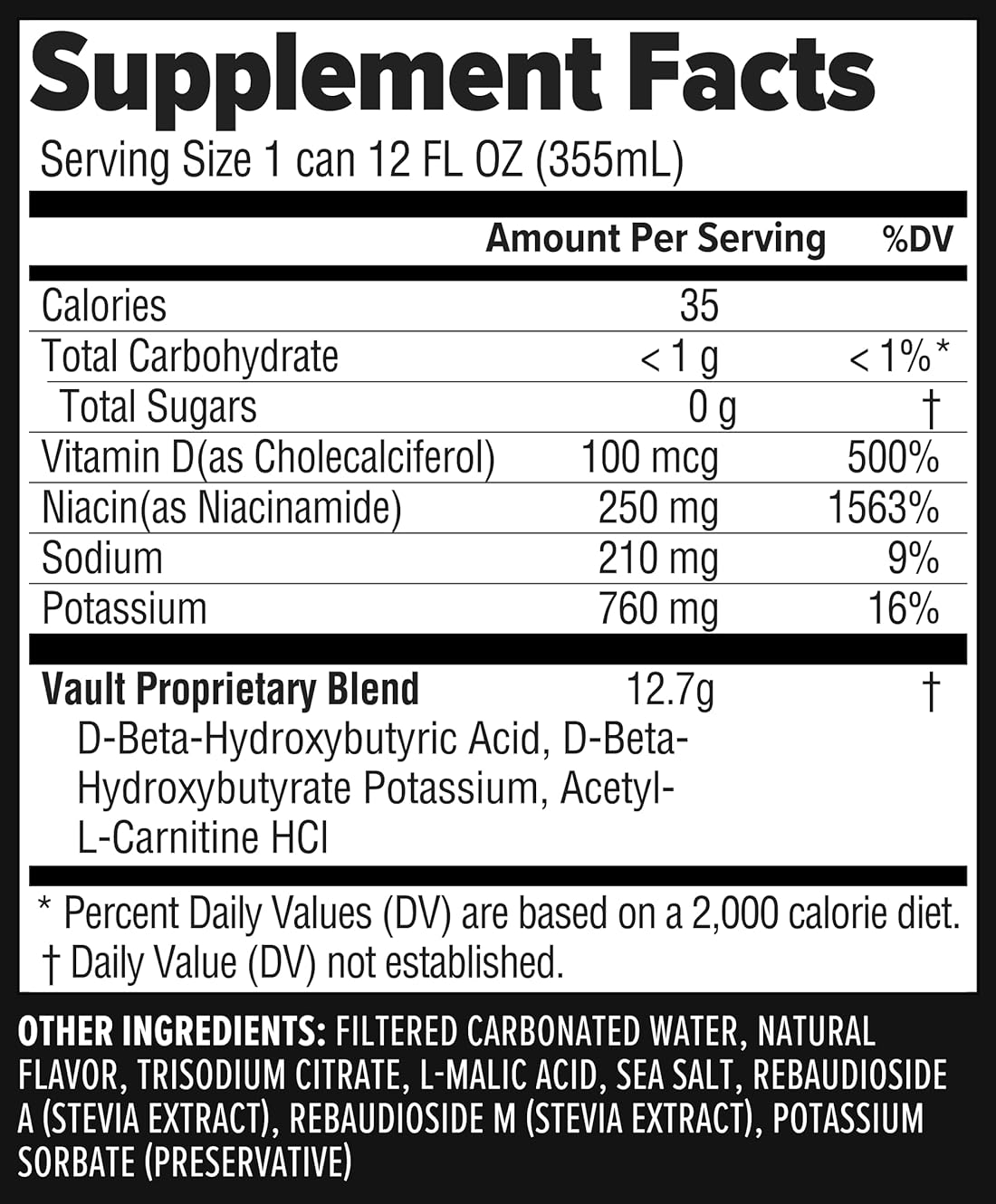
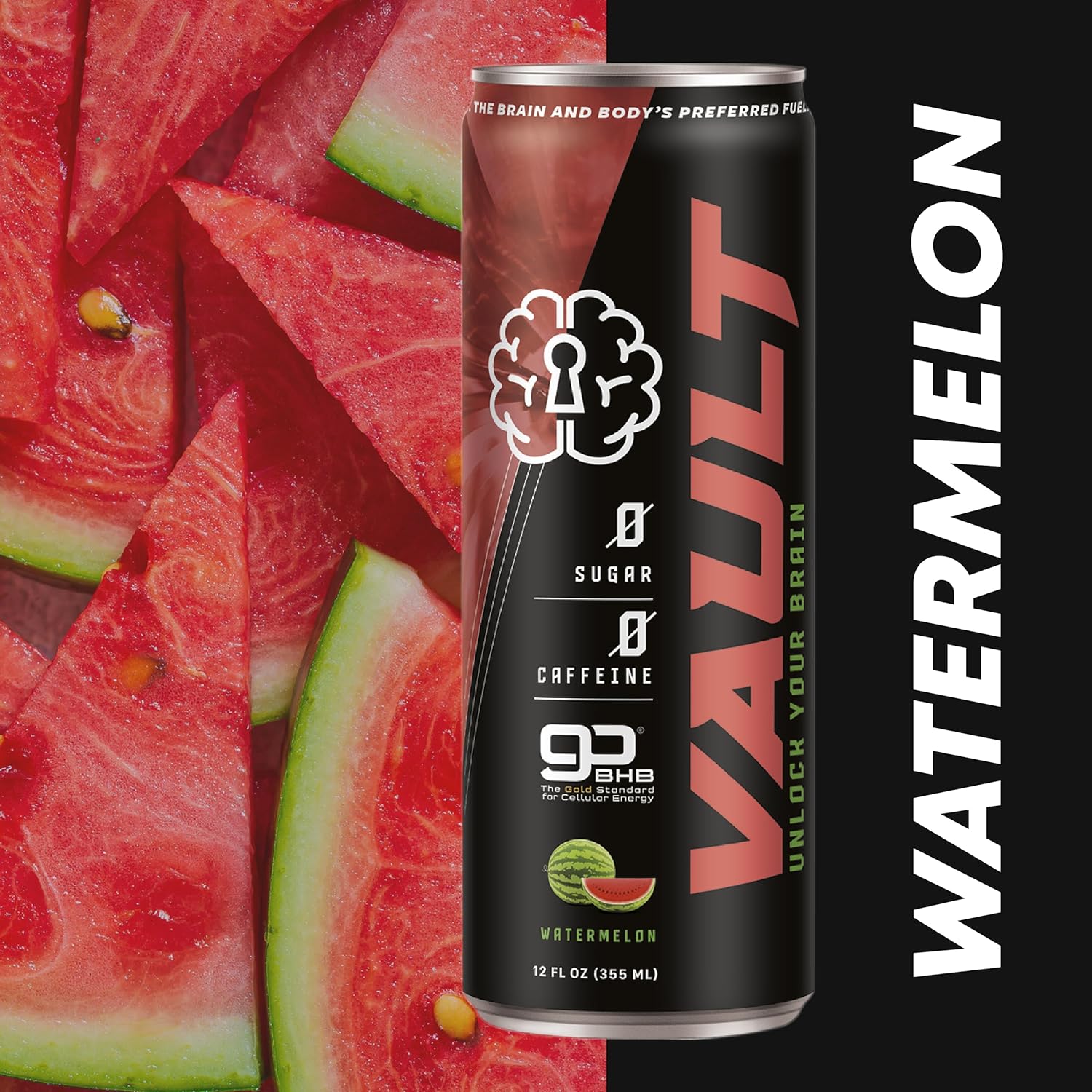


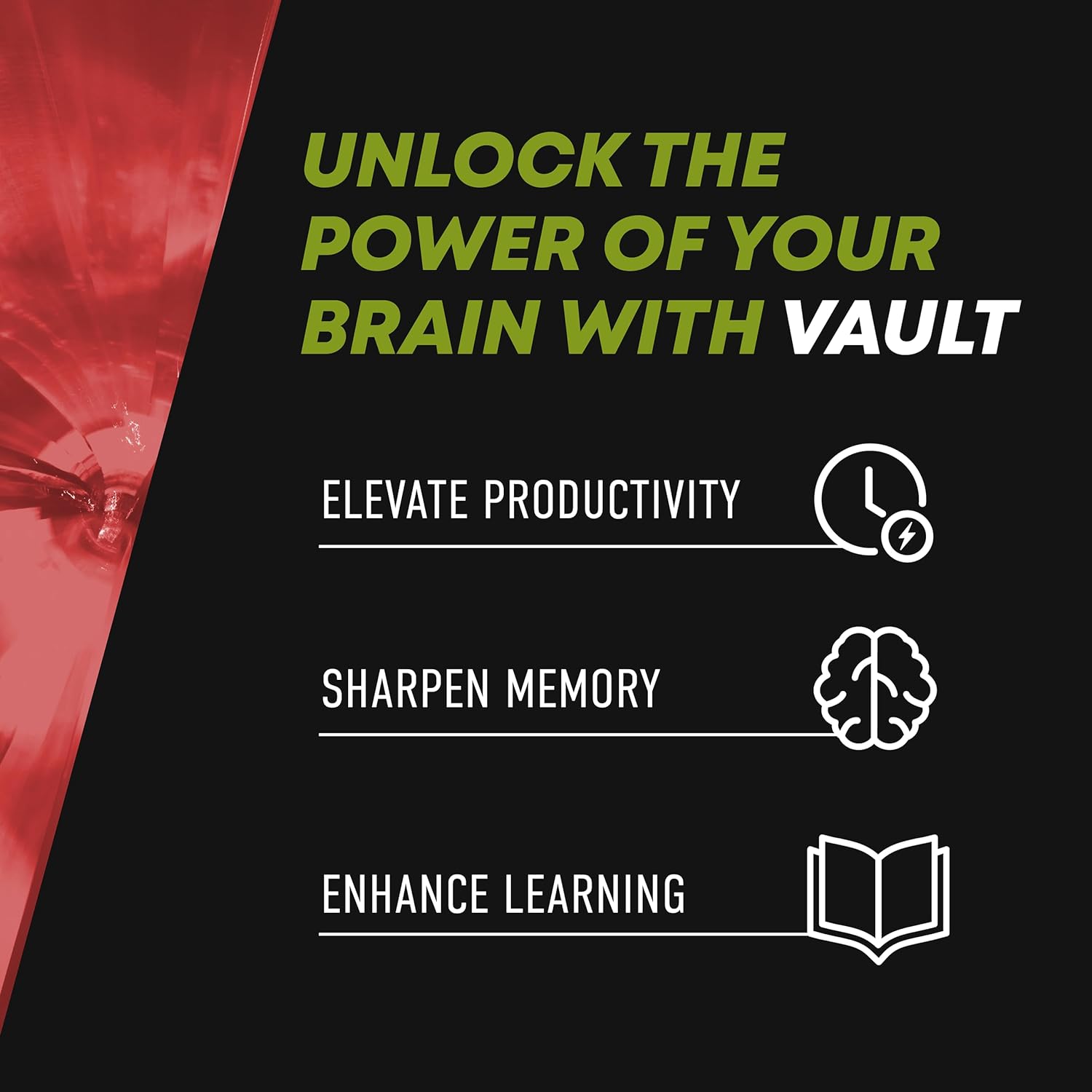
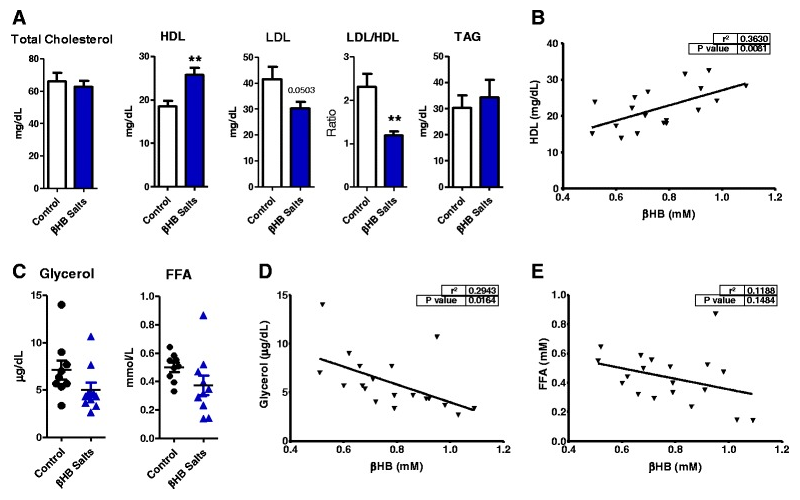
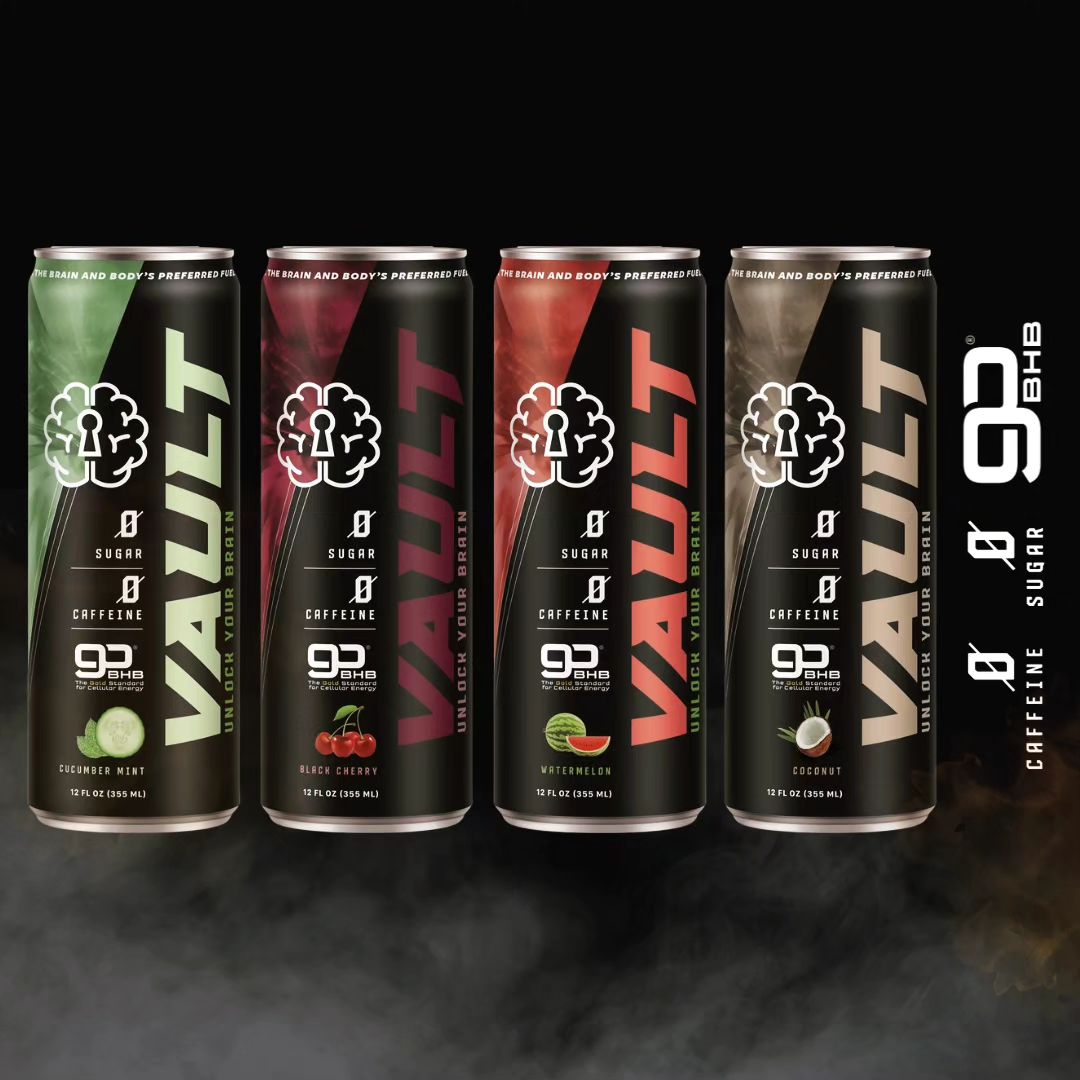
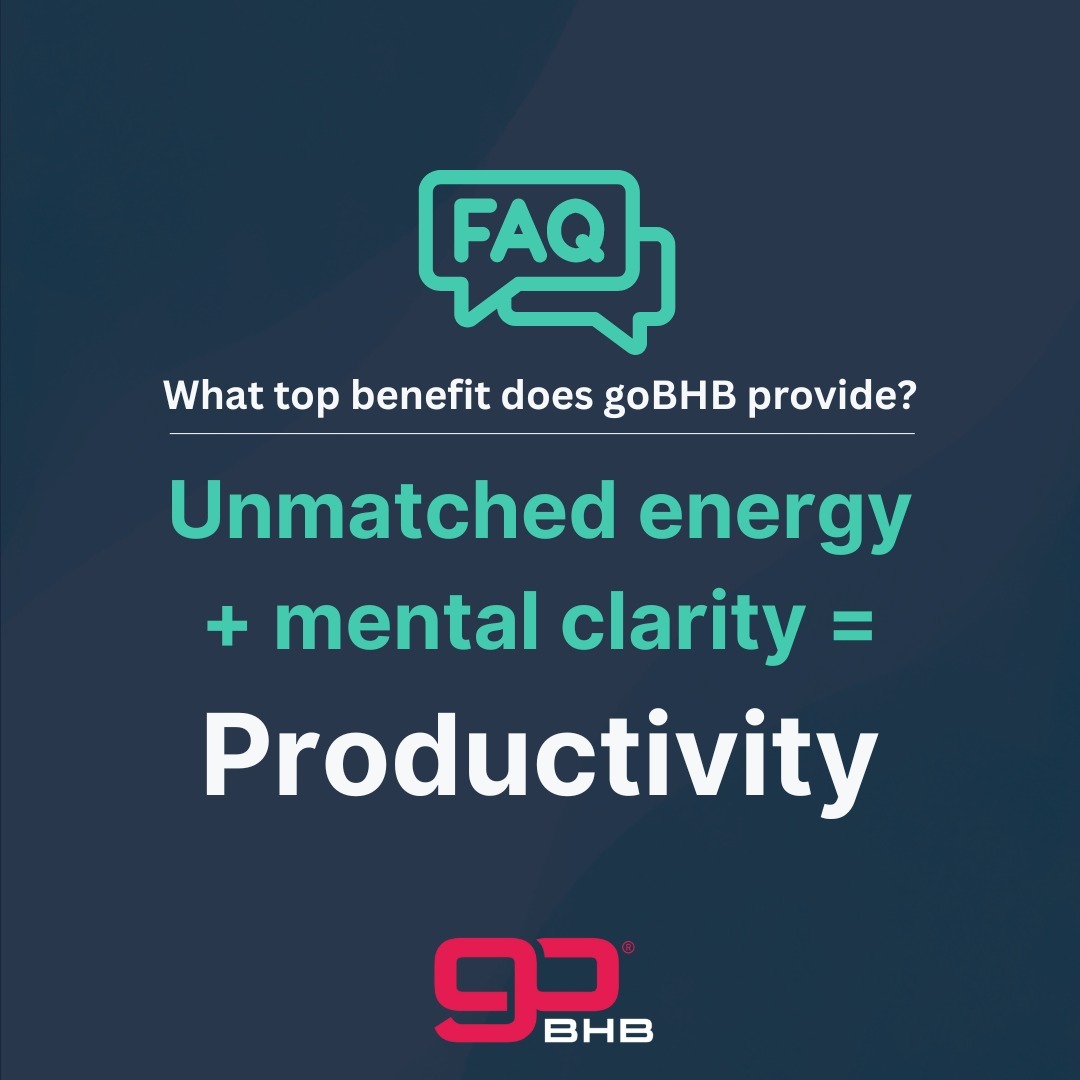
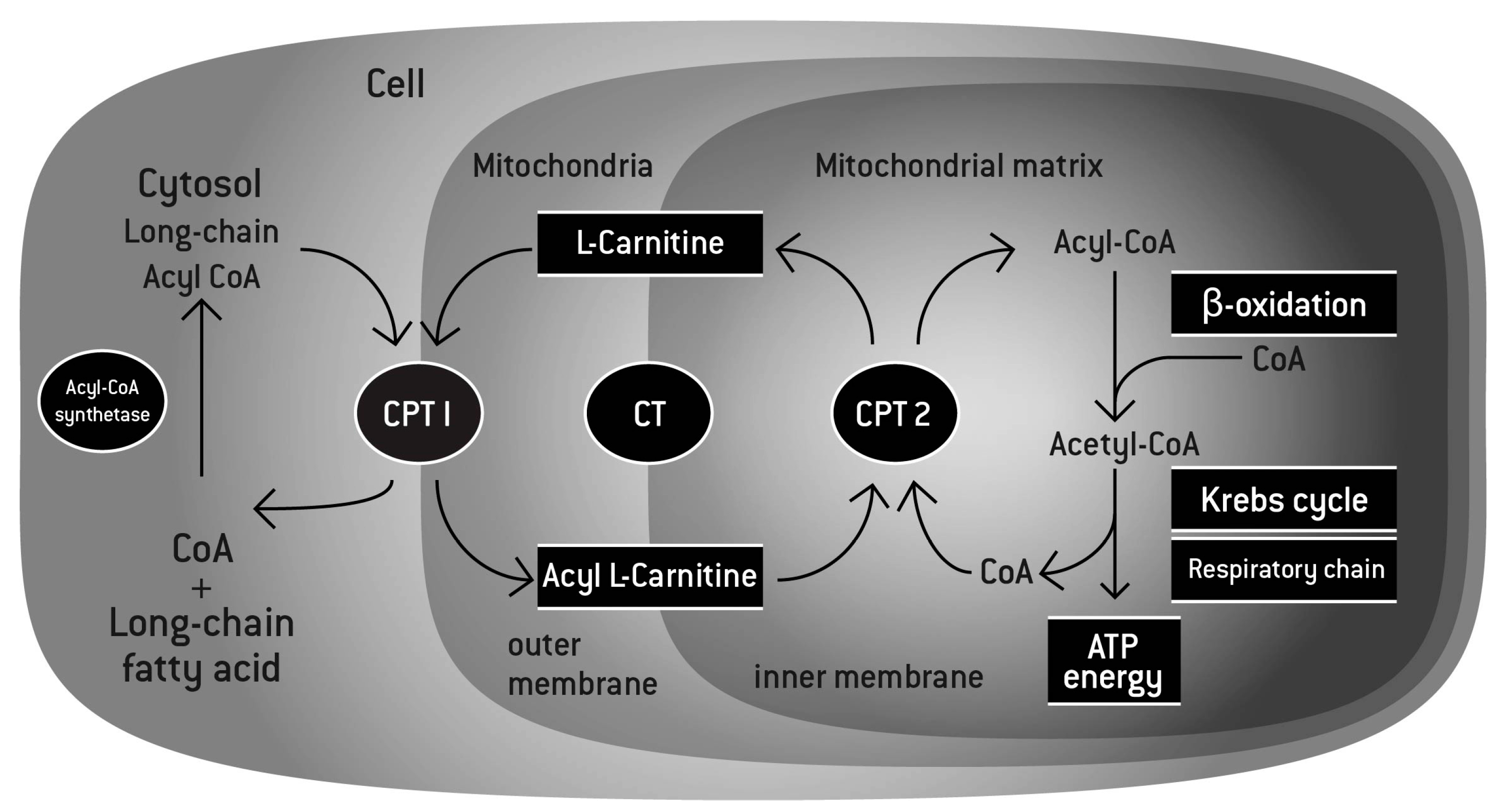
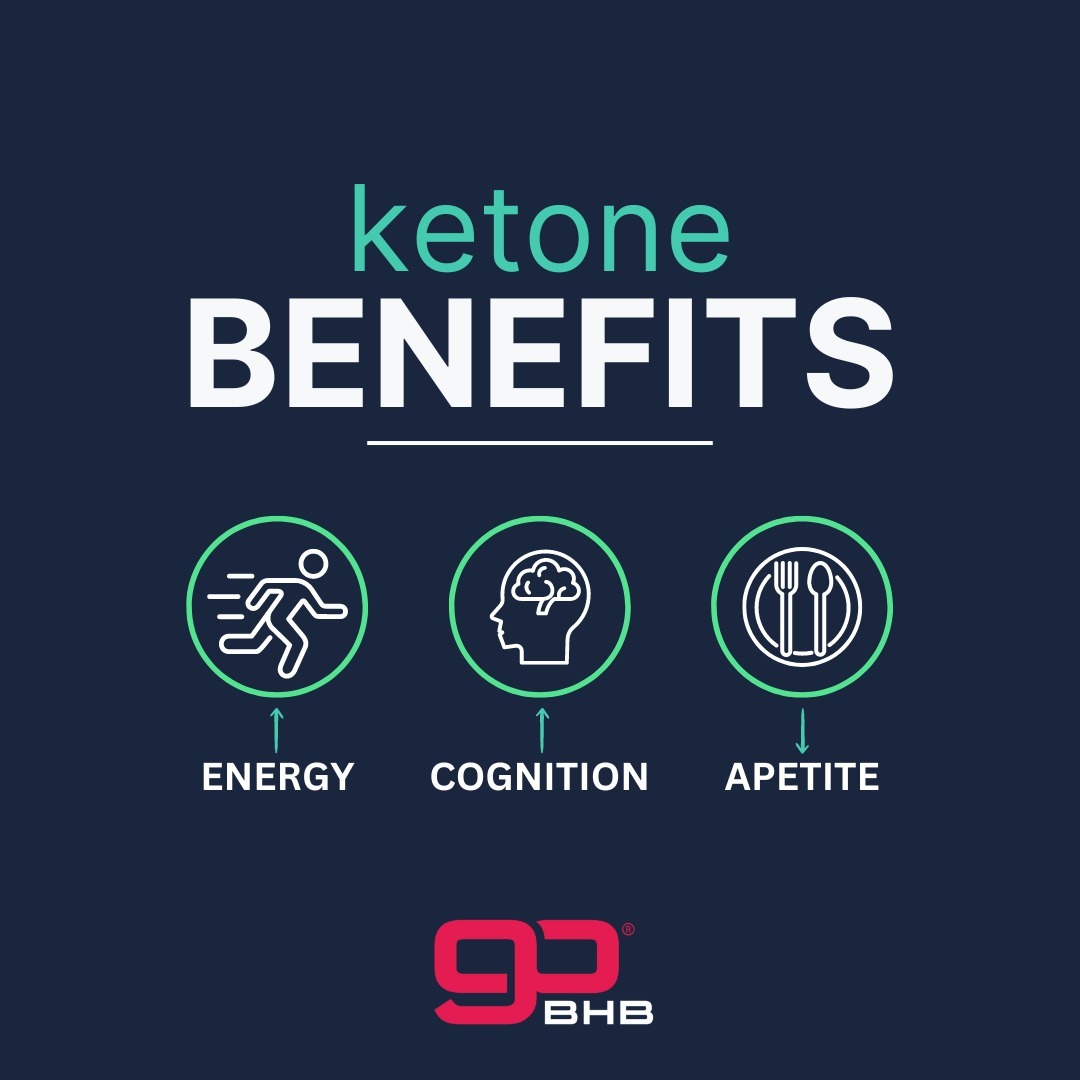
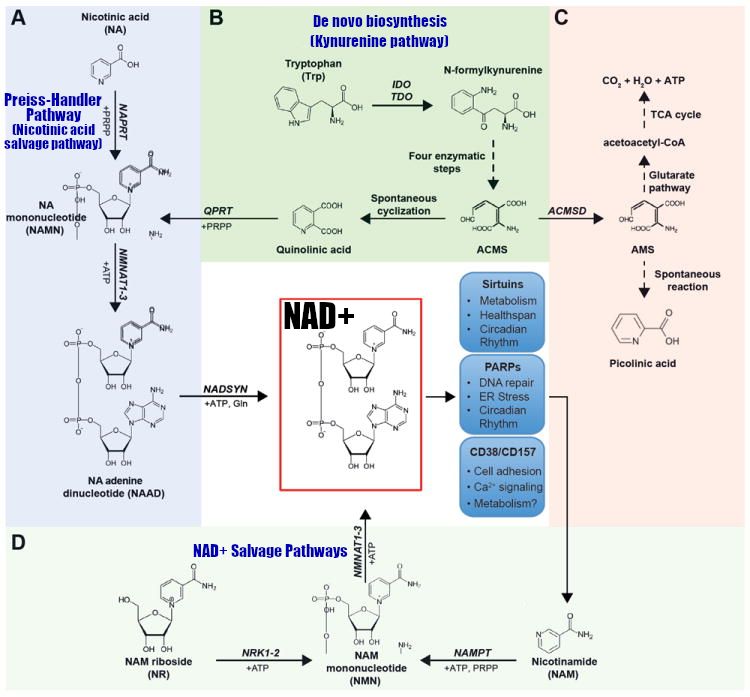
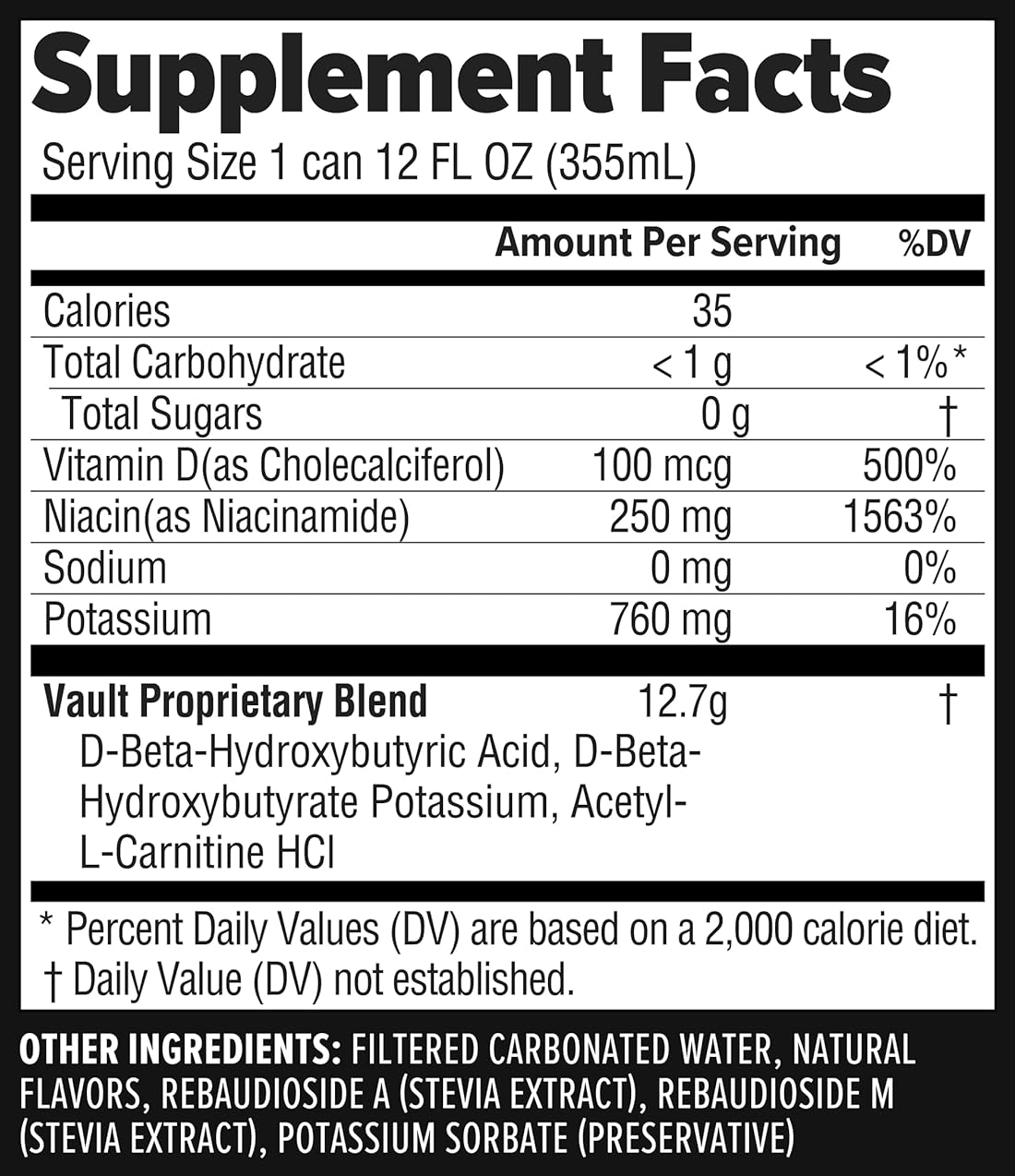
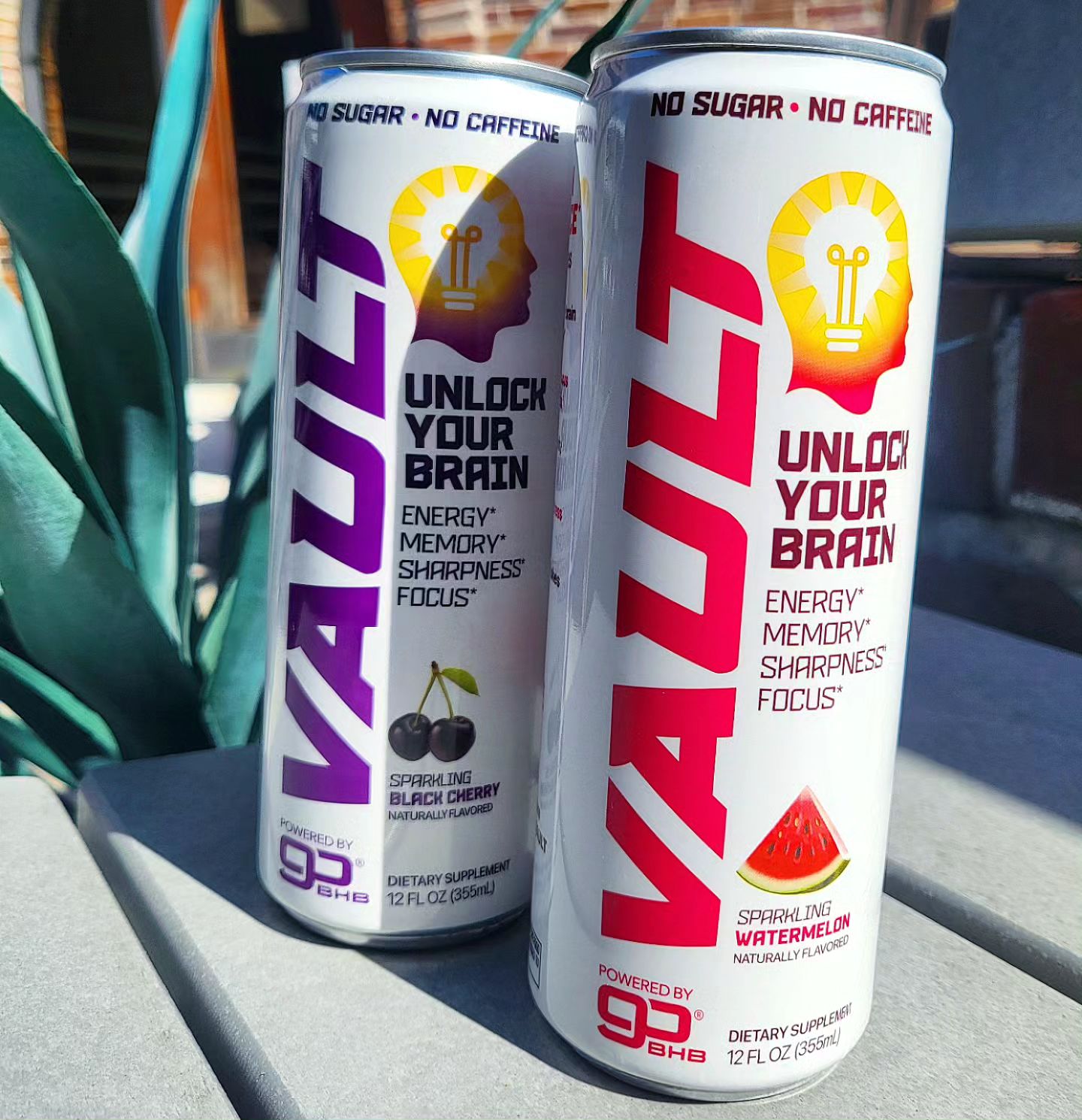
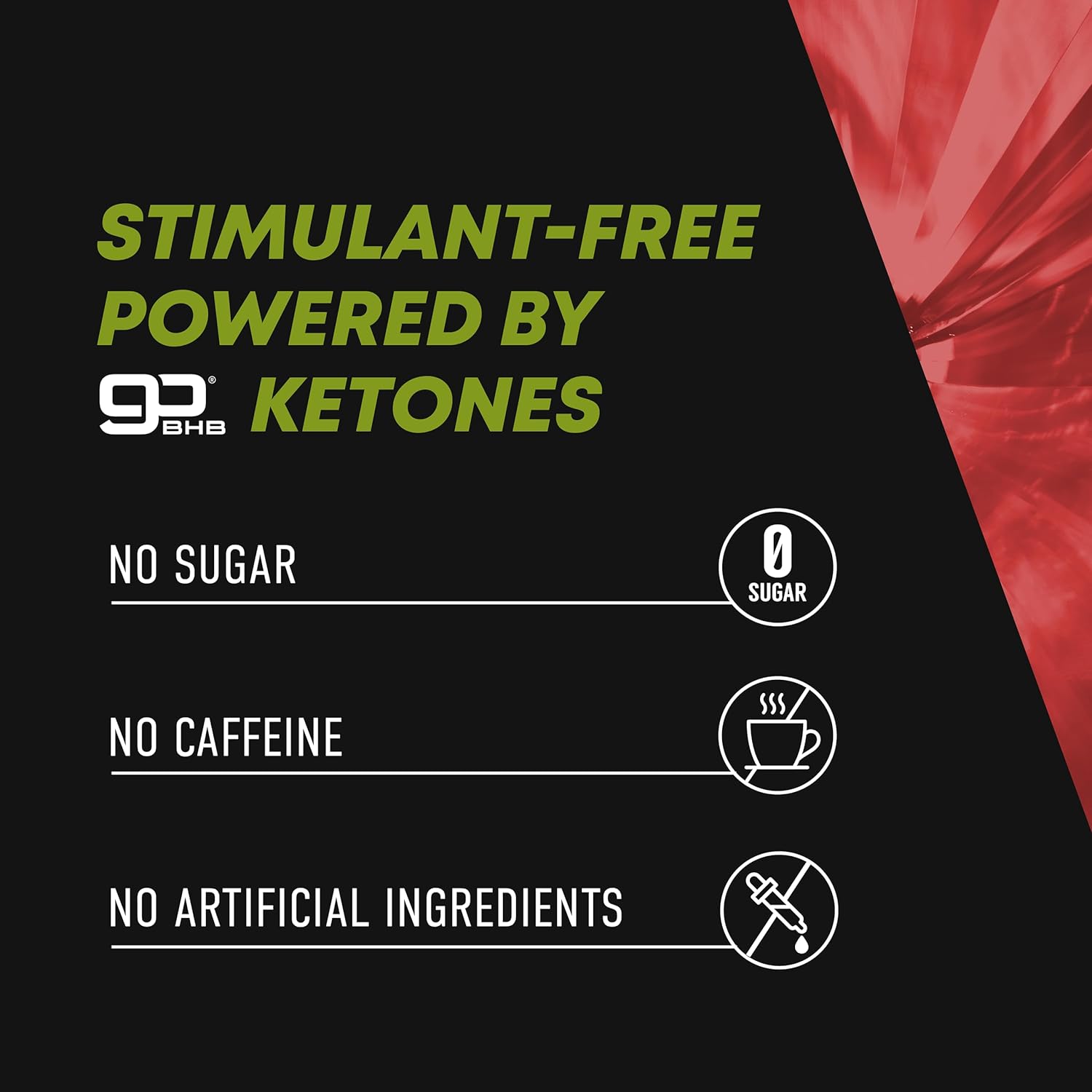


Comments and Discussion (Powered by the PricePlow Forum)